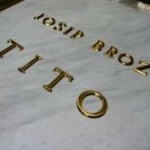The idea of building a monumental Orthodox church in Belgrade dates from the late 19th century. In 1926, after several competitions, the architectural design of Bogdan Nestorović was accepted. Construction was interrupted in 1941 due to beginning of the World War II. Years later, as a result of the bombing and neglect of the government at the time, continuing construction ... Read More »
Category Archives: discover belgrade
Feed SubscriptionSlavija
Slavija square covers the area between Kralja Milana, Beogradska, Makenzijeva, Svetosavska, Bulevar oslobodjenja, Deligradska and Nemanjina streets. Slavija is one of the city’s main landmarks a major transport hub and unfinished urban complex, which is yet to be seriously edited. Get direction to Slavija Read More »
Nikola Pasic Square
Nikola Pasic Square is located between Terazije, Boulevard of King Alexander and street Dečanska, and is the youngest Belgrade square. It was built in 1953 along with a fountain. The formation of the square started after World War II. Then tram turntable was relocated, the fountain was constructed and the buildings like the House of Trade Unions and the City Administration were ... Read More »
Terazije
Terazije is the most famous Belgrade square. Forming of the core of the square began in the 19th century when the city’s artisans, especially blacksmiths and coppersmiths started to build their major homes. In 1860 Terazije fountain was built as a symbol of the square and of the city which continues to this day. On the turn from 19th to 20th century ... Read More »
Students’ Square
The oldest city square. Extends from Vasa Carapic street, around the University Park and Uzun Mirko street. “Pazarište” or large urban market was opened here in 1824. The market was removed in 1927, and the whole area was turned into a park with the monuments to Josif Pancic and Dositej Obradovic. On the rims of the square Faculties of Philosophy, Philology and Mathematics are situated. ... Read More »
Republic Square
Belgradians reference “At the Horse” as a meeting point for the city’s main square, which covers the area around the National Theater, City Restaurant, and the House of the Serbian Army. The square was formed after the destruction of Stambol gate in 1866. Stambol gate remains in the memory of the Serbian people as a place where horrible executions of impalement were carried ... Read More »
King Peter St.
One of the oldest streets in the city. It is assumed that there once existed the Roman forum, basilica and baths (1st and 2nd century AD). Today the representative building of the National Bank of Serbia is situated here. This street marks many new beginnings. The first pharmacy opened for business (No. 8), the first city hotel, ‘’Kod jelena’’ (between Gracanicka ... Read More »
Boulevard of King Alexander
Boulevard of King Alexander, once the Boulevard of Revolution is the longest street in the city (7.5 km). It extends along the entire urban Belgrade. It is so important in everyday life of Belgrade that Belgradians simply call it ”Boulevard” although Belgrade has 19 boulevards in total. National Assembly building, the Main post office, church of St. Mark and ... Read More »
Nemanjina street
This name was given in 1896. The street becomes significant after the completion of construction of the Main Railway Station in 1884 when it became one of the main roads. Here some important buildings are situated such as the Government Headquarters, Embassies and various ministries. Serving as a reminder of the destructive bombing by NATO in 1999, stands a shell of the former building of the Federal ... Read More »
Museum of history ”House of Flowers”
Museum of history of Yugoslavia- ”House of Flowers” Museum of Yugoslav History includes fund of over 200,000 artifacts that illustrate the history of Yugoslavia in the 20th century and a special emphasis is put on the life and work of Josip Broz Tito. In the Museum there are: The Museum of 25th May, the Old Museum and Memorial ”House of Flowers”. In the ... Read More »
Palace of Belgrade
‘’Beogradjanka’’ Construction lasted from 1969 to 1974. The building has 24 floors and is a spatial city landmark. A shopping center dominates the first few floors whereas the upper floors house offices of various companies and several media outlets. Get direction to Palace of Belgrade Read More »
Millennium Tower
Millennium Tower was built in 1896 to mark the millennium of the founding and the existence of Hungarian state. It is built in the lookout tower style and architectural solution is dominated by elements of Romanticism. Today various cultural events are held in the tower. Get direction to Millennium Tower Read More »
White Palace
Construction of so called ‘’New Palace’’ (or more commonly named White Palace) was completed in 1936. It was designed by architect Aleksandar Djordjevic. After World War II palace was renovated. Palace complex serves for residential purposes and is today the residence of the President of Serbia. Tours of the Palace in Belgrade last from April to October. More information Get ... Read More »
Old Palace
Old Palace was the palace of the Serbian dynasty Obrenovic. Today, it is the headquarters of the Belgrade City Assembly.It was built between 1882 and 1884, and designed by Alexander Bulgarian. The building was built under the influence of academism of 19th century. The New Palace is a monumental building next to the Old Palace, on the Andrićev Venac and today it is the seat of ... Read More »
National Assembly
Project for the National Assembly was made by Konstantin A. Jovanovic in 1891. Later, in 1901, the project of John Ilkić was awarded and this was actually an adaptation of the previous work of Jovanovic. Construction began in 1907 and cornerstone was laid by King Peter I of Yugoslavia. Completing the post-war buildings, especially interior, helped Ilkić’s son Paul, and ... Read More »
National Theatre
Built in the period 1868-1869 by order of Prince Mihailo Obrenovic. The architect was Aleksandar Bugarski who fashioned it in Renaissance style.Bugarski was one of the most important architects of Belgrade in the 19th century. Renaissance conception and decoration of theatre buildings was the fashion at the time, but it was Milan’s “La Scala” that had the most influence. ... Read More »
Palace Albania
Located in a central square Terazije, in many ways a hallmark of the city, the palace Albania was built in 1939 and has long been the tallest building in Belgrade as well as throughout the Balkans. This is one of the few buildings that survived the bombing in World War II. Get direction to Palace Albania Read More »
Captain Misa’s
Captain Misa’s building.This building was built in the period from 1858-1863 as a private palace of Misa Anastasijevic, the “Danube captain” and the richest man in Serbia of the time. Its designer was a Czech Jan Nevole, and the palace was given to the Serbian people for educational and cultural purposes. Today it contains the Rectorate of Belgrade University. Prior to the ... Read More »
Question Mark
Znak Pitanja (The Question Mark) or “?” if you prefer, is the oldest café/restaurant in Belgrade. The unusual name is the result of the first owner’s dispute with the Cathedral across the street – he named the café “By the Cathedral” and since the priests didn’t like an alcoholica hangout to bear such a name, it had to go. The ... Read More »
Palace Princess Ljubica
It was built in 1829-1831 by order of Prince Milos Obrenovic, and was built under the supervision of Haji-Nikola Zivkovic, the pioneer of Serbian architecture in the first half of the 19th century. It was meant as a living space for him and his family– Princess Ljubica and sons – Milan and Mihailo. The building is preserved until today and is the ... Read More »
 CBelgrade See Belgrade, City Guide, Belgrad, Serbia
CBelgrade See Belgrade, City Guide, Belgrad, Serbia



